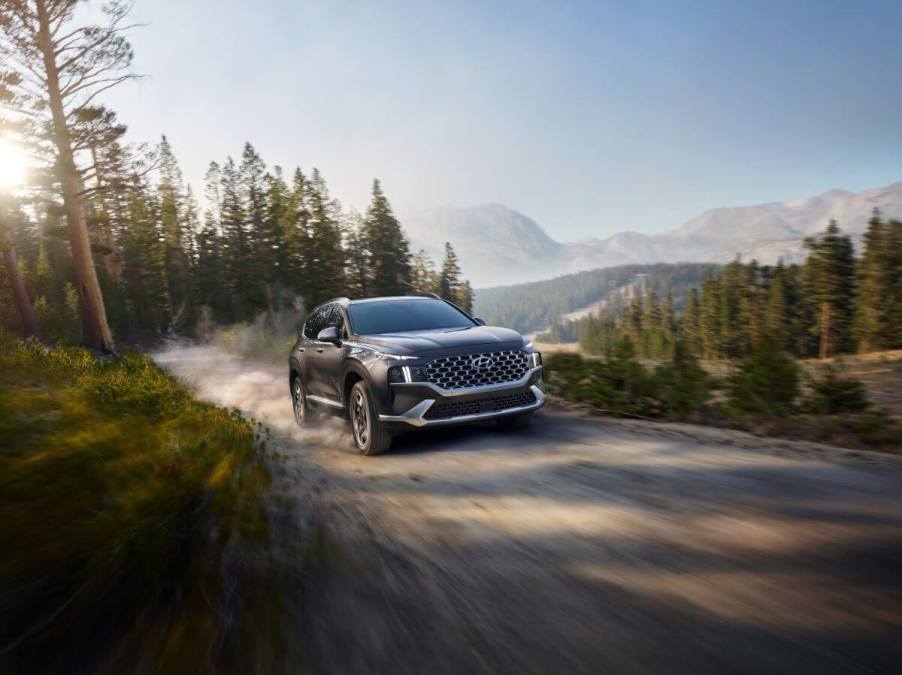
Why Are So Many Hyundai Cars Named After Places in the American West?
Hyundai sells many cars in the U.S. market, including sedans and SUVs. The South Korean automaker names most of its vehicles after familiar places instead of made-up words or series of numbers and letters. Observant consumers might have even noticed many Hyundai models are named for places in the American West. Here’s a look at this trend.
5 Hyundai cars are named for places out West
All of Hyundai’s cars with geographic names are locations west of the Mississippi River. Two are named for places in California. The best-known is the Palisade, the brand’s award-winning midsize SUV. Although the word “palisade” can refer to a line of tall trees or cliffs, the company said it named this three-row crossover after the affluent Pacific Palisades neighborhood in Los Angeles.
The other model with a California-inspired name is the Hyundai Santa Cruz. This compact pickup truck got its name from the college beach town in the state’s Central Coast region.
Another college town that inspired Hyundai is Tucson. It’s one of the largest cities in Arizona and the site of the University of Arizona. It’s also the name of the automaker’s popular compact SUV, the Tucson.
Meanwhile, the Hyundai Santa Fe is another model that got its moniker from a town in the American West. This midsize SUV is named for Santa Fe, New Mexico, the state’s capital.
The final Hyundai car named after an American place is the Kona. This subcompact crossover nods to a district in Hawaii renowned for its coffee.
Why do automakers name their cars after places in the American West?

Car names are usually a marketing gimmick. They’re supposed to create an image in people’s minds about what to expect from that vehicle. One famous example is the Ford Mustang. Similarly, cars have names that refer to geographic places because the automakers want car shoppers to envision those beautiful or majestic places when they think about the vehicle.
In addition, those places generally have attractive-sounding names familiar to people. That’s what makes Hyundai’s model names effective. They sound good, and although they refer to smaller cities, they’re large enough for most consumers to have heard of them.
But there’s another reason Hyundai and other automakers name their cars after places in the American West. Those monikers evoke images of the outdoors, whether mountains, beaches, or deserts. Consumers generally associate positively with those images, so automakers prefer those names, The New York Times explains. However, because these places are rural or not densely populated, the cars named for them typically don’t sell like hotcakes in those areas.
Here’s the story behind the Hyundai name
Though Hyundai’s car names evoke images of the American West, the automaker’s moniker is more abstract.
Chung Ju-Yung founded Hyundai South Korea in 1947, but the company didn’t begin building cars until 20 years later. Hyundai started as an engineering and construction firm, so technology was always at the forefront of its business. So it makes sense the company was named after the Korean word “hyeondae,” which translates to “modernity.”
The company likely wanted the name to elicit images of progress and industry. Hyundai has certainly lived up to those ideas.



